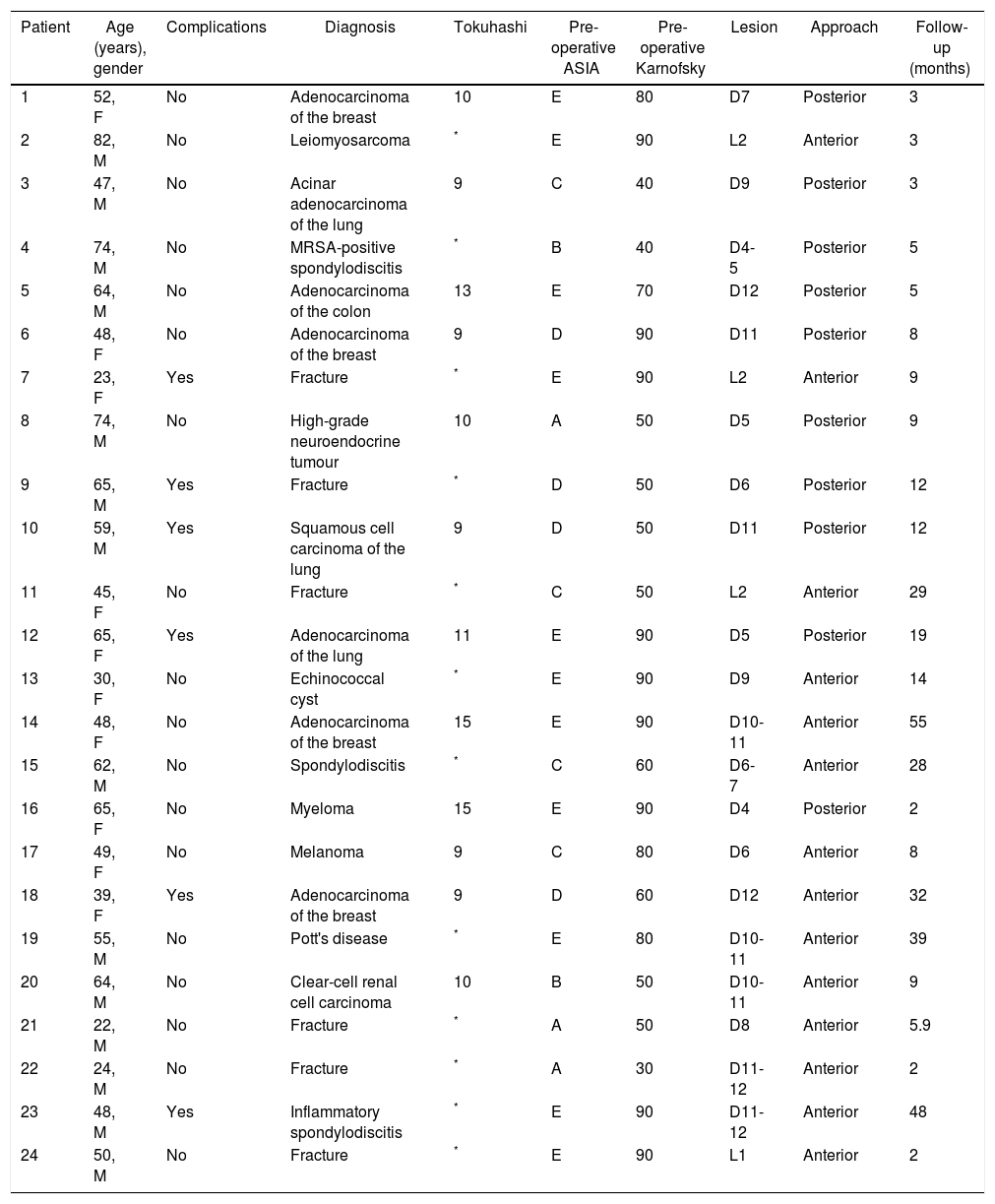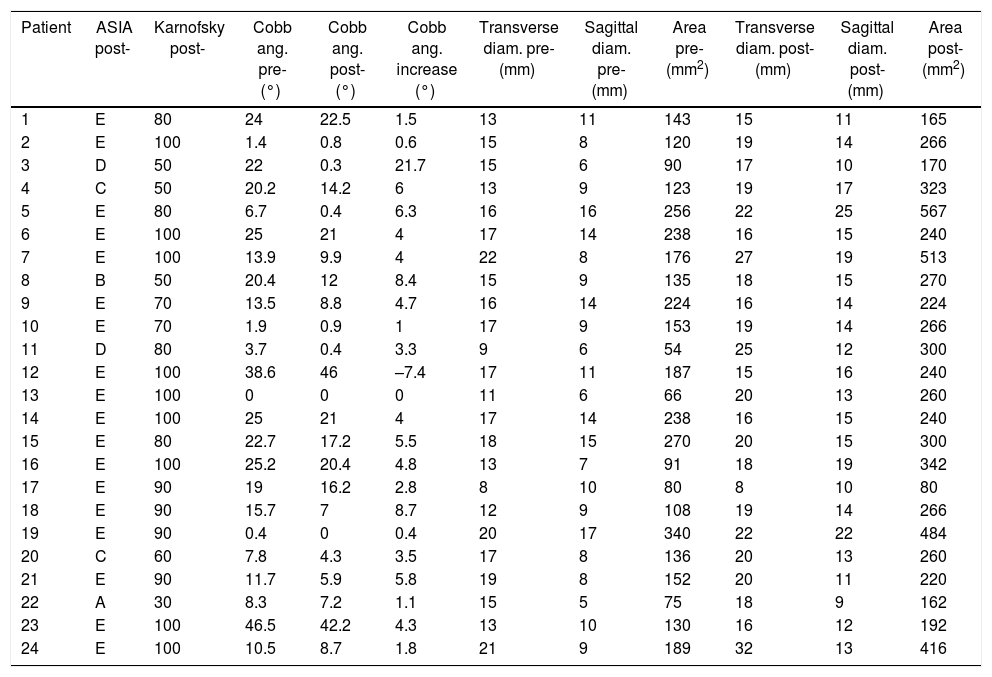We analysed the decompression obtained by dorsal or dorsolumbar corpectomy measured by Cobb angle and the spinal area prior to and after surgery and compared the evolution of the technique over the last five years of the study.
Material and methodA retrospective review of patients operated between 2005 and 2015 through anterior or posterior approaches was performed.
Results24 patients were studied and a significant improvement was observed between the preoperative and postoperative morphometrical measurement (4.18° correction of the kyphosis and an increase of 130.8mm2 in the spinal canal, p<.001 in both cases) and in clinical parameters (45.8% of patients improved in ASIA, and Karnofsky showed 13 points of improvement, p<.001 in both cases). However, there was no correlation between clinical and morphological parameters. We also observed that in the last five years of the study posterior approaches were more frequently used with good results.
ConclusionsDorsal corpectomy allows significant spinal decompression, with neurological improvement but this does not correlate with the measurement of decompression. Thanks to technical improvements, less invasive techniques (posterior approaches and MISS) allow good clinical results, which are similar to those obtained by anterior techniques.
Hemos analizado la descompresión obtenida mediante corpectomía dorsal o dorsolumbar medida a través del ángulo de Cobb y el área del canal medular antes y después de la cirugía. Además, se ha comparado la evolución de la técnica entre los primeros 5 años del estudio y los 5 posteriores.
Material y métodoSe realizó un estudio retrospectivo de los pacientes operados entre 2005-2015 en nuestro centro mediante abordajes anteriores y posteriores.
ResultadosSe intervinieron 24 pacientes y observamos una mejoría significativa entre los valores preoperatorios y postoperatorios en el análisis morfométrico (corrección de 4,18° de cifosis y un aumento del área del canal medular de 130,8mm2 con una significación de p<0,001 en ambos casos) y mejoría clínica (45,8% de los pacientes presentaron mejoría en la escala ASIA y una mejoría media de 13 puntos en el Karnofsky, p<0,001). Sin embargo, no se observa correlación entre los parámetros clínicos y morfométricos. También hemos observado que en los últimos 5 años del estudio los abordajes posteriores se utilizaron con mayor frecuencia y con buenos resultados.
ConclusionesLa corpectomía dorsal permite una descompresión espinal significativa, con mejoría de la función neurológica sin que se correlacione con las mediciones de la descompresión. Gracias a las mejoras técnicas, las técnicas mínimamente invasivas (abordajes posteriores y técnicas MISS) permiten unos buenos resultados funcionales que son similares a los obtenidos con técnicas anteriores.
Article

If it is the first time you have accessed you can obtain your credentials by contacting Elsevier Spain in suscripciones@elsevier.com or by calling our Customer Service at902 88 87 40 if you are calling from Spain or at +34 932 418 800 (from 9 to 18h., GMT + 1) if you are calling outside of Spain.
If you already have your login data, please click here .
If you have forgotten your password you can you can recover it by clicking here and selecting the option ¿I have forgotten my password¿.















